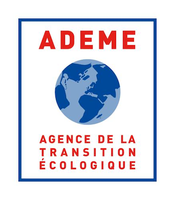Search eceee proceedings
Pathways towards achieving a climate-neutral building stock in Germany
Panel: 7. Policies and programmes for better buildings
This is a peer-reviewed paper.
Authors:
Jana Deurer, IREES - Institute for Resource Efficiency and Energy Strategies, Germany
Jan Steinbach, IREES - Institute for Resource Efficiency and Energy Strategies, Germany
Charlotte Senkpiel, Fraunhofer Institute for Solar Energy Systems ISE, Germany
Julian Brandes, Fraunhofer Institute for Solar Energy Systems ISE, Germany
Abstract
The German Climate Change Act (KSG) defines a sector specific reduction target for the building sector for 2030 of 67 million tonnes CO2eq achieving climate neutrality by 2045. In a scenario analysis this paper examines the extent to which greenhouse gas emissions (GHG emissions) in the building sector in Germany can be reduced by 2045 through current and additional policy instruments. Therefore, a trend scenario is modelled to quantify the target gap by 2030 and 2045. Second, a cost-optimal transformation path for complete reduction of GHG emissions until 2050 from a sector-coupled perspective is modelled (target scenario). For the trend scenario the bottom-up simulation model Invert/ee-Lab is used to map the exploratory development of the building stock based on the current political framework and individual decisions of building owners. The target scenario is modelled with an optimisation approach using the energy system model REMod, which represents the whole energy system and determines a target system considering CO2 reduction targets and the remaining CO2 budget. Coupling both energy models enables a comparison between the simulation of actors' decisions and the resulting diffusion of heat supply systems and building renovation with the target system, in order to identify possible field of actions to reduce GHG emissions. In the third part, additional policy instruments are suggested for closing the gap between trend- and target scenario with the impact being modelled in a policy scenario. In the trend scenario a gap of 21 million tonnes of CO2eq results in 2030 compared to the target defined in the KSG. In 2045, 31 million tonnes of CO2eq remain, which is 91 % less than in 1990. The target scenario outlines a pathway to achieve decarbonisation of the building stock by 2045, already reducing GHG emissions to 52 million tonnes CO2eq until 2030. The ambitious target requires a consistent change to renewable heat supply and heat grids as well as an increase in renovation rates.
Downloads
Download this presentation as pdf: 7-190-22 _Deurer_pres.pdf
Download this paper as pdf: 7-190-22_Deurer.pdf
Panels of
1. Dynamics of consumption: less is more?
2. Efficiency and beyond: innovative energy demand policies
3. Policy, finance and governance
4. Monitoring and evaluation for a wise, just and inclusive transition
5. Towards sustainable and resilient communities
6. Energy-efficient and low-carbon mobility for all
7. Policies and programmes for better buildings
8. Innovations in products, systems and building technologies



























